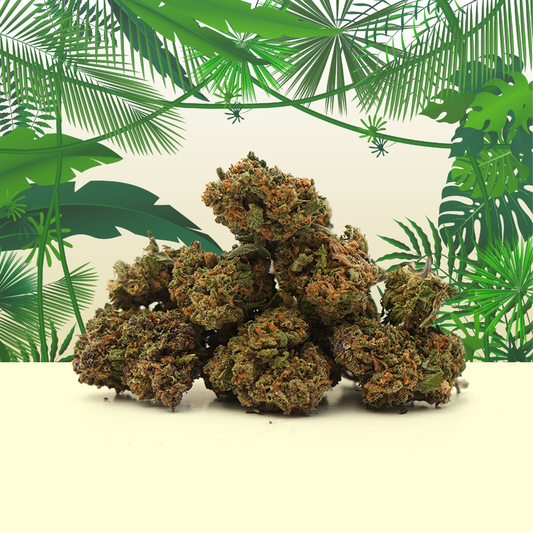I've explained it to you several times on this blog from our CBD store: cannabidiol affects the human body, but do you know exactly how? Have you ever heard of the endocannabinoid system? No ? We'll introduce you to it in this article and explain how CBD can interact with this endocannabinoid system.
What is the endocannabinoid system?
Before we find out how the endocannabinoid system works, let's take a moment to explain what it actually is. I won't go into too much detail to keep this content accessible to everyone, but the endocannabinoid system is made up of thousands of cannabinoid receptors and associated endocannabinoid receptors. Like the nervous system, for example, it's a highly complex system with a wide variety of connections. At present, we're only familiar with two receptors, CB1 and CB2.
CB1 receptors are mainly located in the central and peripheral nervous system - in other words, in your brain - along the spinal cord and near pain nerve endings. Some are also found in certain organs (heart, spleen, lungs, digestive system, skin, eyes, etc.).
CB2 receptors are found mainly in immune tissue, the liver, the placenta and, like CB1s, in the brain.
What is the role of the endocannabinoid system?
As you can see, we all have this system (including certain animals such as mammals and birds), but what does the endocannabinoid system do? In fact, it plays a vital role in the proper functioning of living organisms. The endocannabinoid system, also known as the SEC, serves to maintain balance within the body, helping it to adapt to external variations (stress, pain, etc.).
The fact that the organism fights to preserve this balance through numerous regulatory mechanisms is known as homeostasis. In fact, the SEC is involved not just in the event of aggression, but in most of our day-to-day actions, such as: cognition, learning, emotions, immune responses, appetite, sleep, anxiety and stress, body temperature, cardiovascular functions, and much more. In fact, the SEC is involved in the overall functioning of the body.
Like the endocrine system, the ECS varies from person to person and can be significantly deregulated. Endocannabinoid levels and activation sensitivity can differ from one subject to another, particularly if receptors are over-stimulated and saturated. Their potential to modulate nerve messages is therefore also downgraded. As a result, some people are more sensitive to cannabis, while others are less tolerant: this is individual variability.
How does CBD actually interact with the endocannabinoid system?
The SEC system was discovered in the 1970s, and studies on it have been multiplying ever since. Today, we know that cannabis and all its derivative molecules act directly on the endocannabinoid system in living beings. So, how does CBD actually interact with the endocannabinoid system? Here's a simplified explanation.
Virtually all cannabinoids have the ability to bind to SEC CB1 and CB2 receptors. However, CBD, a phytocannabinoid, does not directly activate these receptors. In fact, it alters the receptors' ability to bind to cannabinoids. CBD supplementation also influences other receptors, increasing naturally-occurring levels of endocannabinoids, notably anadamide. CBD also inhibits the synthesis of FAAH(Fatty Acid Amid Hydrolase). As a result, as CBD levels rise, FAAH levels fall and endocannabinoid levels rise. Finally, CBD is said to antagonize THC, inhibiting its metabolism. In this way, it could help reduce or even cancel out the effects of THC.
The SEC is still largely unknown to scientists, and many studies are still underway. We're only just beginning to really understand how it works.
To discover Mama Kana's CBD products, click here:




![Banana Cream CBG 🍌 [Greenhouse]](http://mamakana.com/cdn/shop/files/banana.jpg?v=1683038126&width=533)
![Bubba Kush CBD 🫧 [Greenhouse]](http://mamakana.com/cdn/shop/files/Bubba_fond_4b55b9bd-2083-406f-8843-1229994bb3ec.png?v=1738679473&width=533)




